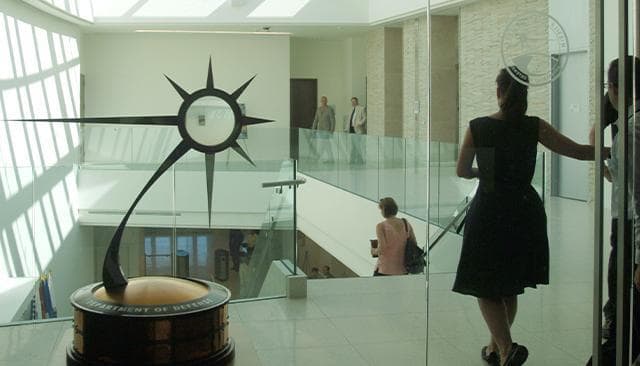2020 Year in Review
TwinOps Combines Digital Twins and DevOps for Better Cyber-Physical Systems
Cyber-physical systems (CPS), which intertwine software and mechanical components, integrate computation, networking, physical objects and processes, and human proficiency. Multiple engineering, validation and verification (V&V), and testing challenges complicate every stage of CPS development, from capturing system requirements to building a solution that functions as designed and is fit for purpose.
“Currently, CPS engineering relies on models built in isolation, limiting in-depth unit and integration testing until the system is done,” explained Jerome Hugues, senior architecture researcher at the SEI. “This isolation could produce imprecise characterizations of system behavior that may lead to accidents,” he said, referring to recent failures in airliners and autonomous vehicles.
Hugues cites unmanned aerial vehicles (UAVs) as a modern CPS beset by complex development and testing challenges. Traditional modeling may not properly capture key issues such as sensor timing jitter or bias, or imprecise component behaviors that affect function, safety, and security. Issues could still appear late in testing—or even after the system has been deployed.
To improve CPS analysis and testing, Hugues and his colleagues combined the SEI’s expertise in model-based engineering (MBE) and DevOps to efficiently deliver systems with increased quality. This solution, dubbed TwinOps, proposes a process that unifies MBE, digital twins, and DevOps practices in a uniform workflow.
MBE relies on models as first-class artifacts to analyze, simulate, and ultimately generate parts of a system. Creating digital twins simulates in software the operation of a physical system to streamline testing and iteration of novel technologies. DevOps focuses on software engineering activities, from early development to integration and improvement through the monitoring of the system at run time.
By combining these techniques with prior research on the Architectural Analysis Design Language (AADL), a standardized architecture description language, and the Open Source AADL Tool Environment (OSATE), the SEI was able to develop digital doppelgängers of systems to improve the CPS engineering process. “We combined DevOps and model-based engineering to ease the construction and deployment of simulation test benches and digital twins,” said Hugues. “TwinOps combines system, software, and physical models to improve system understandings.”
TwinOps combines system, software, and physical models to improve system understandings.
Jerome HuguesSenior architecture researcher, SEI Software Solutions Division

Hugues and his colleagues on the TwinOps project used AADL and the Architecture Centric Virtual Integration Process (ACVIP), along with SysML models, models of the environment, and an Internet-of-Things platform, to address both system and software concerns such as safety, security, performance, and code generation. “Analytical frameworks based on AADL were able to evaluate system integrability prior to actual integration testing, reducing the possibility of errors,” noted Hugues.
This research’s contributions are two-fold. First, it introduced ModDevOps as an innovative approach to bridging MBE and software engineering using DevOps concepts and code generation from models. ModDevOps smooths the transition from model-level V&V to software production. Second, the research developed TwinOps, a specific ModDevOps pipeline that equips system engineers with new analysis capabilities through the careful combinations of model artifacts as they are built. Adding a digital twin capability to ModDevOps could reduce cost and risk to Department of Defense programs requiring embedded software-hardware integration, such as the U.S. Army’s Future Vertical Lift program.
TwinOps extends the SEI’s research into improving both the state of the art and the state of the practice of designing and analyzing CPS. It builds on the SEI’s expertise in DevOps and MBE by reusing and combining available tools in new ways, developing a pipeline to build better solutions.
To learn more about TwinOps, visit resources.sei.cmu.edu/library/asset-view.cfm?assetid=651118.
RESEARCHERS
Jerome Hugues, Anton Hristozov, John Hudak, Joseph Yankel

